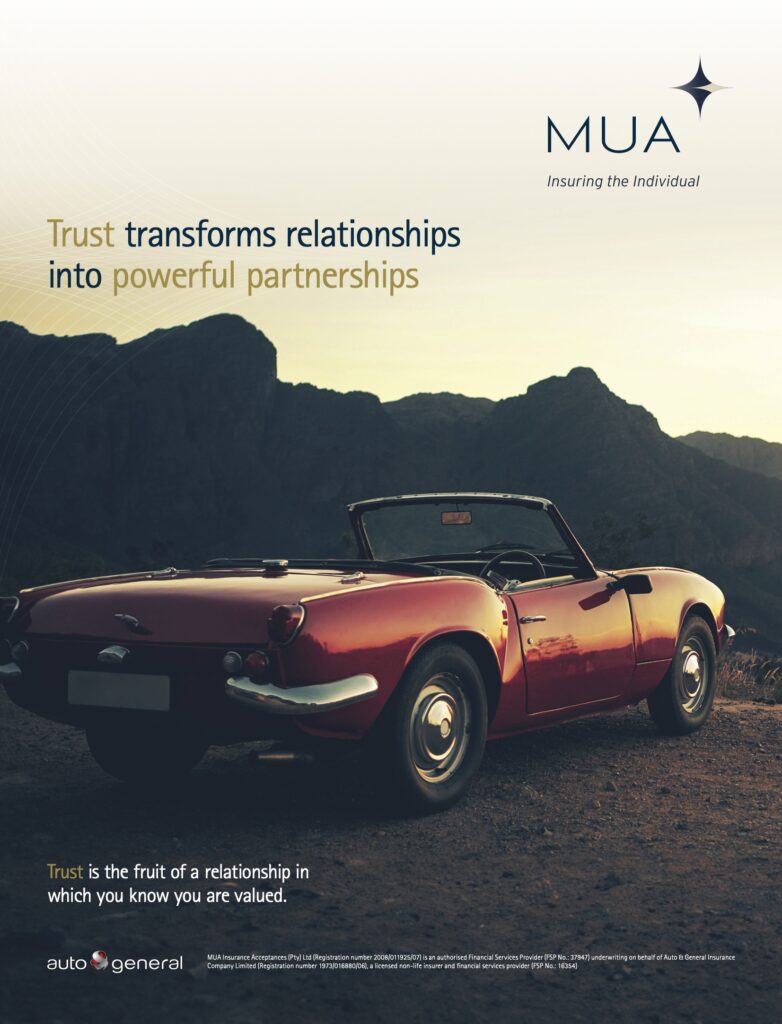Valerie Harrington, Fund Manager, Blue Orchard – a leading global impact investment manager and a member of the Schroders Group.
Gender inequality throttles entrepreneurial vibrancy and stifles economic growth. But, with National Women’s Month in August, investors might be surprised to see how meaningfully they can help foster financial inclusion for all.
Financial inclusion – access to appropriate, affordable and well-regulated financial services – is a fundamental pillar in economic and social development. One of the UN’s Sustainable Development Goals (SDGs), it is also an enabler for many other development targets, including eliminating poverty and gender equality.

But as essential as financial inclusion is globally, 1.4 billion adults remain completely unbanked. The majority are women, poor adults and the less educated, according to the World Bank’s Global Findex, 2021.
Gender inequality is a global issue, most noticeable in emerging and frontier markets. Equal opportunities create more resilient economies that can endure and recover from crises more rapidly.
With National Women’s Month being recognised this month, investors may be surprised to discover how directly they can contribute to closing the gender gap and foster equality.
Why are gender considerations still relevant in 2023?
Gender-smart investing took on additional urgency after Covid-19, given the pandemic’s disproportionate effect on women. Twice as many women lost their jobs globally (64 million) during the pandemic, according to the World Economic Forum. The UN estimated that in 2021, for every 100 men aged 25 to 34 living in extreme poverty, there were 118 women.
A total of 435 million additional women and girls are expected to live in extreme poverty, a gap expected to widen. Moreover, it is also estimated that 80% of people displaced by climate change are women (United Nations Development Programme (UNDP), 2016).
At the current rate of progress, it will take 132 years to reach full gender parity. This is according to the World Economic Forum Global Gender Gap, which considers key dimensions of economic participation and opportunity, educational attainment, health and survival, and political empowerment. As you may expect, the road is far longer in developing economies.
The reasons for this might not be immediately apparent, but as the UNDP has put it, women are more “structurally vulnerable” due to “gender-differentiated relative powers, roles and responsibilities”. For example, we know women are more likely to be poor, and to work in informal, temporary and part-time jobs with lower pay and less social protection. Women are also proportionally more dependent on threatened natural resources, due to their role in agriculture.
The OECD estimates that if women participated in the economy identically to men, it would add up to $28 trillion, or 26%, to annual global GDP in 2025. The untapped potential is, again, greatest in developing countries. Gender equality would be catalytic in creating more resilient, sustainable and inclusive economies going forward.

TRUST TRANSFORMS RELATIONSHIPS INTO POWERFUL PARTNERSHIPS
Trust is the fruit of a relationship in which you know you are valued.
MUA Insurance Acceptances (Pty) Ltd (Registration number 2008/011925/07) is an authorised Financial Services Provider (FSP No.: 37947) underwriting on behalf of Auto & General Insurance Company Limited (Registration number 1973/016880/06), a licensed non-life insurer and financial services provider (FSP No.: 16354)
Why gender matters for financial inclusion
Financial inclusion is a powerful tool for economic empowerment. Microfinance in particular has played a key role in providing women access to financial services in emerging markets. A large share of microfinance portfolios are comprised of women. However, the traditionally “gender neutral” approach to financial inclusion has on occasion limited its effectiveness and shown to sometimes result in unintended negative consequences (Consultant Group to Assist the Poor, 2021). By not considering gender, we are ignoring both the particular circumstances that come with being a woman, as well as our unconscious gender bias (which we all arguably have).
For example, a woman in a developing economy is more likely to work in informal employment, but less likely to own land or property. These are important factors influencing your ability to take a loan and the terms at which it’s offered. Gender norms, which vary depending on the culture, may also limit women’s ability to access, use and benefit from financial services.
Data from different sources show that if you are a women entrepreneur, you are more likely to get rejected for a business loan. If your application is accepted, you may receive a lower amount, a higher rate and a shorter tenor. Collateral requirements may be more stringent compared to male peers. This is despite women showing the same (or better) repayment rates as men.
Inter-American Development Bank Invest has partnered with several financial institutions in Latin America to identify if gender biases play a role in credit decision making. Its aim is to quantify the impact of these decisions on their bottom line. Not only were the financing hurdles for women – outlined above – confirmed upon analysis of banks’ real data, they also found that for identical requests women were nearly 18% less likely to have their loan applications approved. Around 8% of the financial potential income generated by those portfolios was “left on the table”, implying millions in foregone profits.
This is likely why the World Bank estimates the finance gap for women to be $1.7 trillion. Globally, less than a third of formal small and medium businesses are owned and run by women, due largely to lack of access to financial services. They estimate there is a $300 billion annual credit deficit for those women-owned businesses.
Innovative finance can tackle gender inequality within financial inclusion
There is a small but growing number of funds that invest with a with a specific “gender lens”. While this may take different forms, in general these funds:
- Take gender-based factors into consideration throughout the investment process
- Seek to advance gender equality through the strategy’s activity, including meeting the diverse financing needs to women entrepreneurs, empowering women as consumers and strengthening sectors that predominantly employ women
As an example, based on BlueOrchard’s experience in Asia, an investor’s capital will join that of others to provide debt funding to a number of financial institutions. The institutions will have passed specific ESG and impact assessments, including aspects such as workplace equity practices. The financial institutions, known and trusted partners to the overarching fund, will then “on-lend” to the target borrowers. In this case, the borrowers would be women-led/owned businesses or enterprises that offer products or services that substantially improve the livelihoods of women or girls.
These funds might take a blended finance liabilities approach. Blended finance aims to enhance the concept of partnership between the public and private sector by maximising synergies and setting clear impact targets on sustainable development.
In such a structure, capital from public investors is used as a catalyst to attract and increase the scale of gender-lens impact investments from the private sector, and could be structured in various layers to incorporate different risk appetites. For instance, donors or development finance institutions (DFIs) have an explicit impact target as part of their strategies and therefore potentially a higher risk tolerance compared to private investors. The catalytic effect from public sector capital could be achieved by its place in the overall capital structure, for example, with subordinated capital assuming higher risk and/or provided with certain concessions.
In addition, donors may come into the initiative by providing grants for technical assistance, which includes projects that either support portfolio companies themselves, or the ecosystems in which they operate. Technical assistance grants – for capacity building – play a crucial role in gender-lens strategies. They help financial institutions adapt their products or processes to the needs of women clients, for example.
We are leading the “new frontier” of gender, diversity and inclusion (GDI) focused initiatives, and are exploring a strategy for this in Latin America. In addition to managing gender-lens blended finance strategies, BlueOrchard also has a gender-lens in public markets, having invested in ”gender bonds”. These are cutting edge securities that can back projects to empower women and girls in specific geographies.

